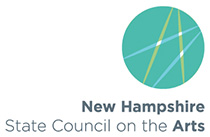Featured Poet: Katie Umans, Dover
 Katie Umans moved to New Hampshire in 2007. Her poetry has appeared in Barrow Street, Indiana Review, Michigan Quarterly Review, Crazyhorse, Court Green, and others; has been nominated for a Pushcart Prize; and will soon be anthologized in The Helen Burns Poetry Anthology: New Voices from the Academy of American Poets’ University & College Prizes, 1999–2008. She has an MFA from the University of Michigan, was a Ruth and Jay C. Halls Poetry Fellow at the Wisconsin Institute for Creative Writing from 2005-2006, and is the recipient of a 2010 Individual Artist Fellowship from the NH State Council on the Arts. Katie Umans moved to New Hampshire in 2007. Her poetry has appeared in Barrow Street, Indiana Review, Michigan Quarterly Review, Crazyhorse, Court Green, and others; has been nominated for a Pushcart Prize; and will soon be anthologized in The Helen Burns Poetry Anthology: New Voices from the Academy of American Poets’ University & College Prizes, 1999–2008. She has an MFA from the University of Michigan, was a Ruth and Jay C. Halls Poetry Fellow at the Wisconsin Institute for Creative Writing from 2005-2006, and is the recipient of a 2010 Individual Artist Fellowship from the NH State Council on the Arts.
Ekphrastic poetry is traditionally poetry that comments on another piece of art, frequently a painting.. I have a love-hate relationship with ekphrastics. Art bouncing off art can be interesting, but it can also be a cat chasing its own tail.. I decided to try writing an ekphrastic poem that has no actual piece of art as its subject at all. Its images are all invented or composited from the art I've seen in my lifetime. I think that the poem is really about the conflict between the intentions of the artist and the needs of real people.
EKPHRASTICS
The brown house in yellowed landscape
is pure exercise in architecture,
portrait of land’s thirst.
(What you cannot see:
a homestead woman
stands behind the house
killing sage chickens
with a shotgun. The painter
hates her heat
her bloodied hands
and patience, but she hates
her hunger more.)
~
The woman at toilette:
a sheep white wisp
whose thoughts have always
rested lightly in her mind
like tortoise combs in piled-high hair—
she wanted nothing more or less
than what her watcher wanted
from her: hollow
of her throat, a face
to turn to mirrors, soft
anticipation of
the evening’s entertainment.
(She did not want an infant
by her dressing table, the painter
sure to render it
the frail gray-white
of garlic with its
purple underbleed.)
~
The latest model arcs
on the divan.
(At home, in kitchen light,
the painter’s wife
peels a thick neck
of butternut for supper.)
The painter puts
the model’s nakedness
into the horse’s eye,
the one that’s flickering
with nervous ignorance beneath
the hero braced for battle.
|

